Some things in older homes just make you stop and think, “Why did anyone think this was a good idea?” But if you grew up with them, they weren’t weird—they were just normal. From shag carpet in the bathroom to saloon-style kitchen doors, these oddball design choices made total sense at the time. Whether they were meant to be practical, stylish, or just a product of their era, these features tell a story about how people used to live. For younger generations, they seem baffling. But for those who remember them, they bring back a flood of memories—some warm, some cringe-worthy. Here are 30 weird home features that only make sense if you grew up with them.
Shag Carpet in the Bathroom

Once considered the height of luxury, shag carpeting in the bathroom is a head-scratcher today. The idea was to add warmth and comfort underfoot, especially during cold months. However, the absorbent material easily trapped moisture and was difficult to clean. This design made sense in a time when wall-to-wall carpet was a sign of affluence. People growing up with it often associate it with cozy, well-furnished homes. Now, most people can’t imagine dealing with mildew risks in a humid room. Still, those who had it may fondly recall stepping out of the tub onto a soft surface.
Saloon-Style Swinging Kitchen Doors
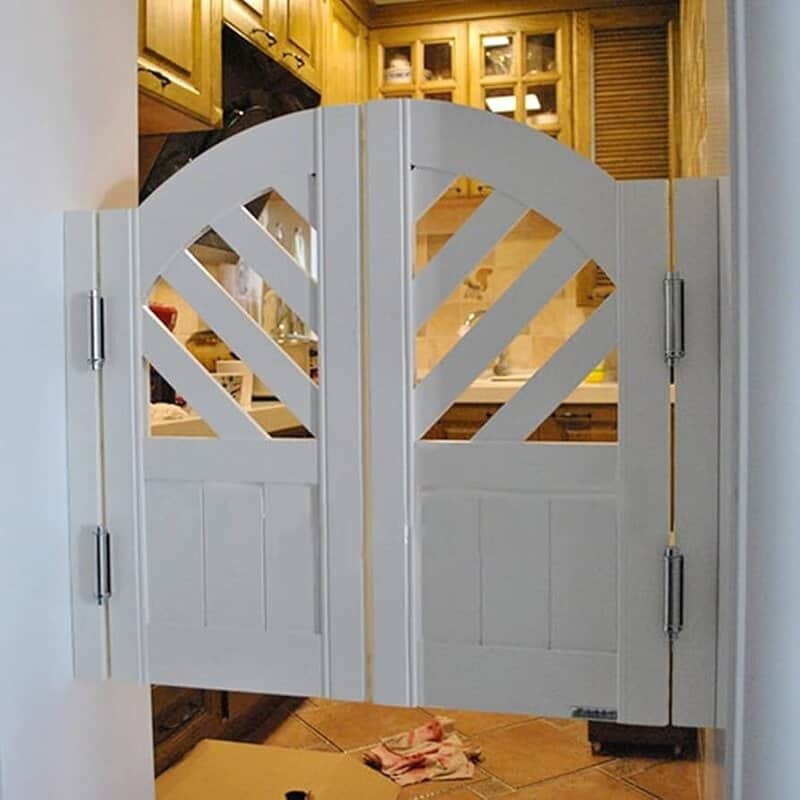
These half-doors, often installed between kitchens and dining rooms, look like they belong in an old Western. But for many families, they served a practical purpose—masking the mess of the kitchen while still allowing airflow and easy access. They were especially popular in mid-20th century homes. Kids loved running through them, while parents appreciated the barrier to cooking smells. Today, they seem theatrical and noisy. Their usefulness has been replaced by open-concept designs and ventilation systems. But they remain a vivid memory for those who grew up around their creaky hinges.
Carpeted Walls
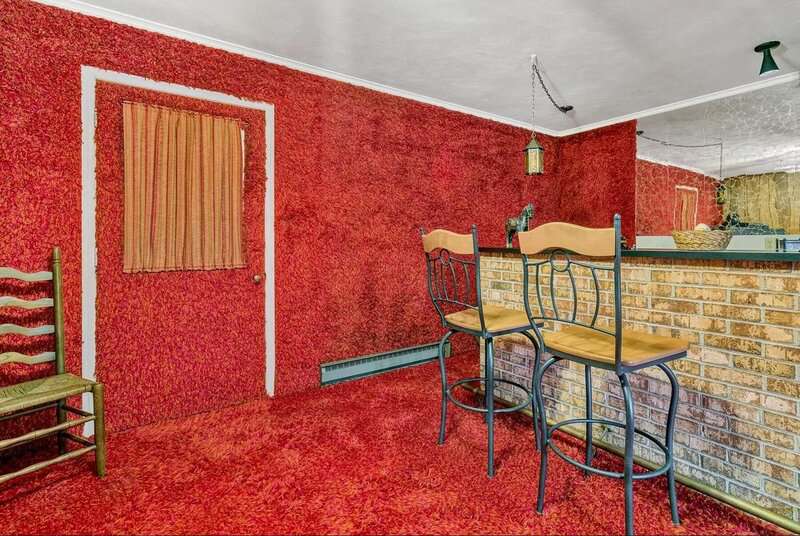
In some homes, particularly in the 1970s and 80s, carpeting didn’t stop at the floor—it climbed the walls. The purpose was both aesthetic and functional: soundproofing, insulation, and a soft touch. Teen bedrooms and basement rec rooms often featured this plush wall treatment. Though it sounds bizarre now, it felt cozy and warm in winter. The style has since fallen out of favor due to hygiene concerns. Dust, allergens, and smells cling to wall carpet just as they do to floors. Still, for some, those fuzzy walls were a childhood staple.
Popcorn Ceilings

Also known as acoustic ceilings, these textured surfaces were extremely common in mid-century homes. They were popular for hiding imperfections and providing some sound dampening. Builders loved them because they were cheap and easy to apply. For families, they were just part of the background—nobody questioned their purpose. Today, they’re seen as outdated and even a potential asbestos risk in older homes. Most modern renovations prioritize smooth ceilings. But many still remember staring up at the bumpy texture from their childhood bed.
Sunken Living Rooms

Also called “conversation pits,” sunken living rooms were all the rage in the 1960s and 70s. These lowered floor areas were designed to create a cozier, more intimate space for gathering. They often featured built-in seating or plush cushions. While stylish at the time, they can pose tripping hazards and accessibility issues today. Modern design prefers uniform floor levels. Yet, those raised on them remember sliding down the steps and sprawling out with family. They remain an emblem of retro home chic.
Pass-Through Kitchen Windows

Before open-concept living took over, pass-through windows were a clever compromise. These small openings between the kitchen and dining room allowed for food transfer without having to go around. They made serving dinner easier and kept kitchen messes out of view. Some even had sliding doors or shutters. Though they now feel quaint or unnecessary, they were once peak efficiency. Today, they’re mostly sealed up during remodels. But many remember them as an essential part of family dinners.
Phone Nooks

Before everyone carried a phone in their pocket, homes had dedicated phone stations. These small built-in shelves or alcoves often sat in hallways or kitchens. They provided space for rotary phones and a phone book. Sometimes, they even had a tiny bench for long conversations. The design became obsolete with the rise of cordless and mobile phones. Still, some older homes retain these charming nooks. Those who used them remember untangling cords and writing notes while chatting.
Glass Block Walls
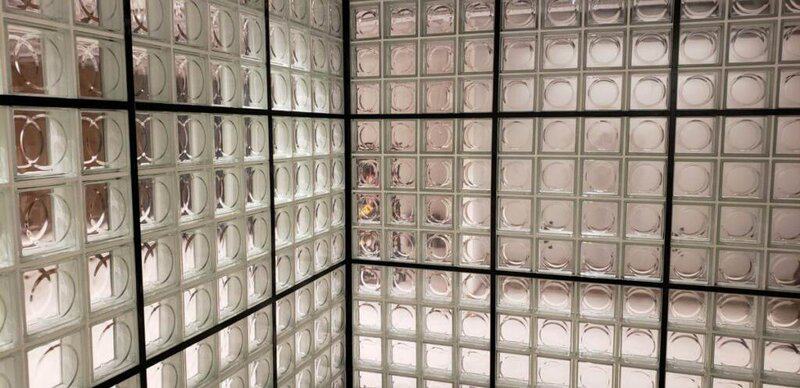
Popular from the 1930s through the 80s, glass blocks were used for privacy without sacrificing light. Often found in bathrooms or entryways, they offered a modern, industrial look. Their thick, frosted surface distorted images while letting in sunshine. Now considered dated, they’ve been largely replaced by clearer, sleeker options. Still, they were once a symbol of mid-century modernism. They can still be found in older homes, often during renovation surprises. Those who grew up with them remember their odd beauty.
Laundry Chutes
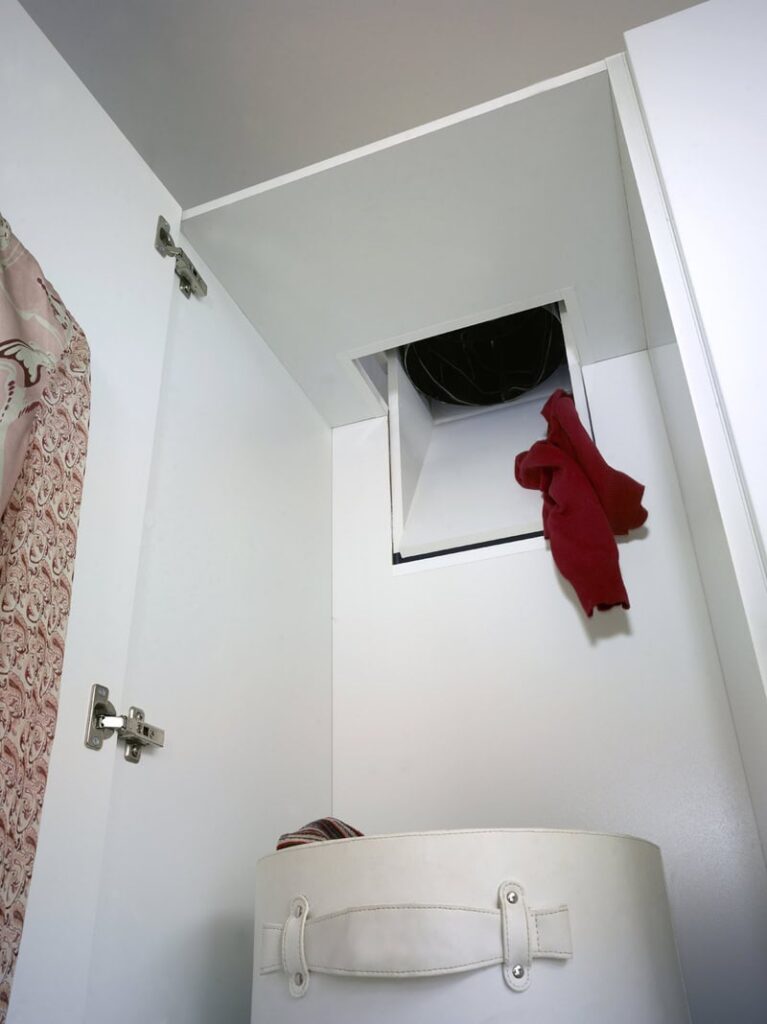
A staple in multi-story homes, laundry chutes were a clever convenience. These vertical shafts allowed dirty clothes to be dropped straight to the laundry room. For parents, it meant less hauling; for kids, it was a fun indoor activity. Some even used them to send notes or toys. Today, laundry rooms are often on the same floor, making chutes obsolete. Modern safety standards also consider them risky for small children. But for many, they’re remembered fondly as a genius touch.
Mirrored Walls

Floor-to-ceiling mirrors weren’t just for gyms—they adorned many suburban living rooms in the 70s and 80s. The goal was to make small spaces feel larger and brighter. While effective, the look became associated with dated decor. Cleaning was a chore, and accidents could be dramatic. Today, the trend leans toward minimalism and subtle reflection. But for many, mirrored walls bring back memories of dance routines and posing. They remain a bold throwback to disco-era design.
Intercom Systems
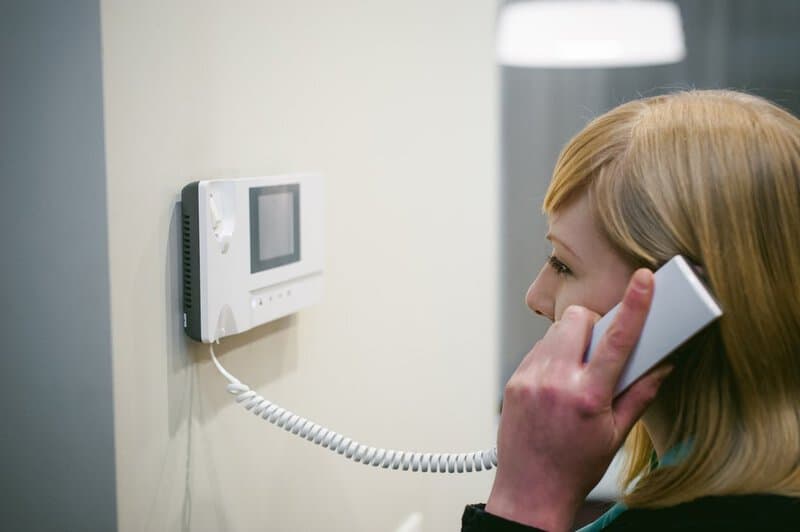
In large homes or split-levels, built-in intercoms helped families communicate room to room. These wall-mounted speaker units allowed parents to call kids for dinner or monitor the front door. Some even included radios or music controls. While high-tech at the time, they now feel bulky and redundant. Smartphones have rendered them obsolete. Still, those who had them recall pushing the crackly “talk” button with excitement. They were once a sign of a modern, tech-savvy home.
Pink Tile Bathrooms

Popularized in the 1940s and 50s, pink-tiled bathrooms were stylish and cheerful. First Lady Mamie Eisenhower helped popularize the color, leading to millions of “Mamie pink” bathrooms. They featured matching tubs, sinks, and even toilets. The look symbolized postwar optimism and femininity. Today, pink tiles are often ripped out for more neutral tones. But preservationists and nostalgia lovers still celebrate them. Many who grew up with them remember them with affection.
Toilet Paper Holders with Covers

These metal or ceramic holders came with a flap that covered the toilet paper roll. The flap was meant to protect the paper and add a touch of elegance. Though unnecessary by today’s standards, they were once very common. Over time, they were phased out in favor of simpler designs. But they’re still found in vintage bathrooms. For some, they’re a quirky nod to design excess. They remain a symbol of mid-century attention to detail.
Built-In Sewing Cabinets or Fold-Out Desks

Many mid-century homes were equipped with built-ins for hobbies and homemaking. Sewing cabinets, often hidden behind paneling, provided storage and work surfaces. Some included fold-out ironing boards or writing desks. These spaces reflected the domestic priorities of the era. Today, such built-ins are often repurposed or removed entirely. But they once offered tailored functionality for everyday life. Those raised with them remember them as clever and convenient.
Wood Paneling in Every Room

From basements to dens, wood paneling was once a dominant interior design choice. It gave rooms a warm, rustic vibe and was seen as a sign of coziness and tradition. Often made from inexpensive veneer, it was easy to install and maintain. However, as styles changed, paneling began to look dark, dated, and cheap. Many homeowners eventually painted over it or tore it out completely. Despite its fall from grace, some remember it as part of a comfortable, familiar space. It was a staple of countless mid-century American homes.
Brick Indoors (Especially Around Fireplaces and Bars)

Interior brick walls were once a go-to for creating a rugged or rustic feel, especially in rec rooms and basement bars. They often surrounded fireplaces or were used to separate living areas. Brick was durable and fire-resistant, making it a practical choice. In modern homes, however, it’s often seen as cold or outdated unless tastefully exposed. Faux brick was sometimes used as a cheaper alternative, and that trend aged even worse. Still, many remember these spaces as gathering hubs. They evoke a very specific vintage aesthetic.
Accordion Room Dividers
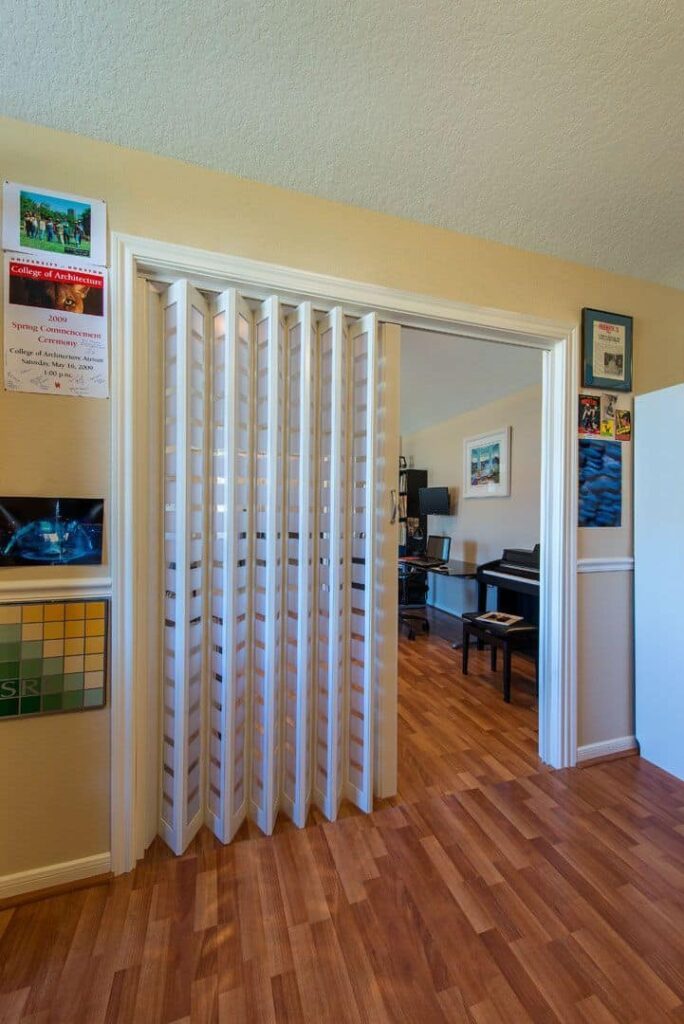
Before open-concept living became the norm, accordion-style room dividers offered flexible privacy. Made from vinyl, wood, or plastic, these retractable partitions could divide one large room into two smaller areas. They were common in homes where space had to serve multiple functions. The soundproofing was minimal, but the practicality was appreciated. Today, they’re considered clunky and cheap-looking. But for those who grew up with them, they were part of daily routines. Especially memorable were the sounds they made when folding and unfolding.
Green or Avocado Kitchen Appliances
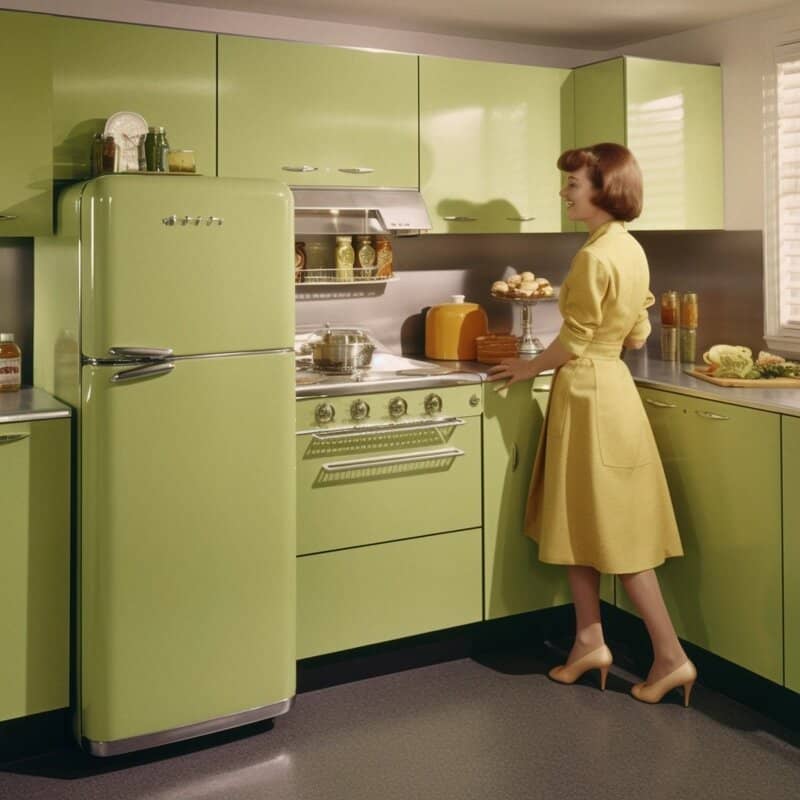
In the 60s and 70s, avocado green was the ultimate kitchen color. Refrigerators, ovens, and dishwashers in this hue were considered modern and stylish. The earth tone reflected the era’s back-to-nature ethos. Over time, however, the color fell hard out of fashion. Stainless steel and white have since taken over. Yet these green appliances remain iconic—and occasionally come back in retro revivals. Many remember them as the heart of family meals.
Drop Ceilings in Basements

Drop ceilings, or suspended ceilings, were common in finished basements for decades. They made it easy to access pipes and wiring while giving the illusion of a clean, finished space. The design included a metal grid with square or rectangular tiles. Though functional, they often felt cheap and institutional. Most modern homeowners replace them with drywall for a more seamless look. But kids growing up in those basements remember the occasional tile shift and hidden storage above. It was all part of basement playtime lore.
Orange and Brown Everything

During the 1970s, orange and brown dominated interior design palettes. From furniture to wallpaper to countertops, the earthy tones were everywhere. The colors were meant to evoke a natural, grounded aesthetic. Today, that combo often feels loud and dated. While some designers are revisiting retro palettes, it hasn’t quite come back in full force. Still, many associate those colors with a warm and welcoming childhood home. The hues are etched into memories of simpler times.
Glass Doorknobs with Brass Plates

These delicate, faceted doorknobs were common in homes built in the early 20th century. Made from cut glass or crystal, they sat on ornate brass plates. Though elegant, they often rattled or stuck over time. Modern knobs prioritize function and simplicity. Still, the old-fashioned ones are prized in historic home restorations. Many people remember them fondly from grandparents’ homes. Their clink and shine brought a touch of charm to even the most modest interiors.
Hallway Light Timers

Before motion sensors and smart lighting, some homes had spring-loaded timers for hallway lights. Twist the dial, and you’d get just enough time to reach the next room. It was a way to save electricity in high-traffic areas. Though clever, it often meant lights clicking off at inopportune moments. Today, they’re mostly replaced with motion detectors or smart bulbs. But they remain a tactile memory—along with the ticking noise. It was just part of navigating home life.
Exterior Coal Chutes or Milk Doors

Older homes in cold regions often had exterior coal chutes or milk doors. Coal chutes allowed fuel delivery directly into the basement furnace area. Milk doors were small cabinets built into exterior walls, allowing milkmen to deliver dairy without entering the home. Both features supported long-gone services and lifestyles. They now confuse new homeowners who uncover them during renovations. For older generations, they’re reminders of a time when deliveries were part of daily life. These hidden doors still echo a different pace of living.
Split-Level Homes

Split-level homes became popular in the postwar boom, especially in the 1950s and 60s. They offered efficient space usage by dividing the home into staggered levels. This allowed for separate living and sleeping areas without requiring a larger footprint. Though efficient, navigating multiple short staircases became inconvenient for aging homeowners. Modern buyers often shy away from the layout, preferring single-level or fully open designs. But for many, the unique flow defines “home.” These designs once symbolized suburban growth and modern family life.
Kitchen Booth Seating

Instead of a traditional table and chairs, some homes featured booth-style seating in kitchens. This diner-inspired layout was built into a corner and often came with storage under the seats. It created a cozy space for family meals and homework. While functional, it took up a lot of room and couldn’t be reconfigured easily. Over time, the design fell out of favor in residential homes. Still, it was beloved for its intimate feel. Many remember it as the site of daily family rituals.
Built-In China Cabinets

Many older dining rooms featured built-in china cabinets with glass doors. They provided display space for fine china, glassware, or heirlooms. The tradition reflected an era when formal dining was a regular occurrence. As lifestyles grew more casual, these features became less relevant. Today, they’re sometimes removed for more flexible layouts. But for those raised around them, they represented elegance and family heritage. The cabinets often held generations of memories behind their glass.
Ventilated Closet Doors

Often made from wood slats, these louvered doors allowed airflow into closets. The idea was to prevent mustiness and help clothing breathe. Common in mid-century homes, they were especially useful in humid climates. However, they also collected dust and were less visually appealing. Many homeowners now prefer solid doors or sliding panels. Still, these doors remind many of chore days and changing wardrobes with the seasons. Their creaky hinges and slatted design are etched into memory.
Radiator Covers

Old steam or hot water radiators were often encased in decorative wood or metal covers. These were designed to improve safety and aesthetics while allowing heat to pass through. The covers often had intricate latticework or floral patterns. With modern HVAC systems, these radiators (and their covers) are increasingly rare. But in older homes, they’re still found—sometimes repurposed as shelves. For many, they’re a defining feature of vintage charm. Sitting on or near one was a wintertime ritual.
Curbside Mail Slots

In older neighborhoods, mail was delivered through a slot in the front door or wall. Some homes even had interior catch boxes for mail collection. This feature eliminated the need for outdoor mailboxes. Today, security and convenience have shifted designs toward centralized mailboxes or lockboxes. But these mail slots remain a curious detail in older homes. They’re a relic of door-to-door delivery and daily newspaper drops. Those who grew up with them remember the satisfying sound of mail landing on the floor.
Ceiling Fans with Pull Chains

Before remote-controlled fixtures became the norm, ceiling fans operated using pull chains. One chain controlled the light, and the other adjusted fan speed. It was a simple solution, but sometimes confusing for guests or kids. The chains often tangled or broke, leading to makeshift fixes like adding longer cords. Modern fans use wall switches or remotes for convenience. But for those who grew up with pull chains, the tactile tug was just how it was done. The soft clink of the chain remains a sensory memory.
